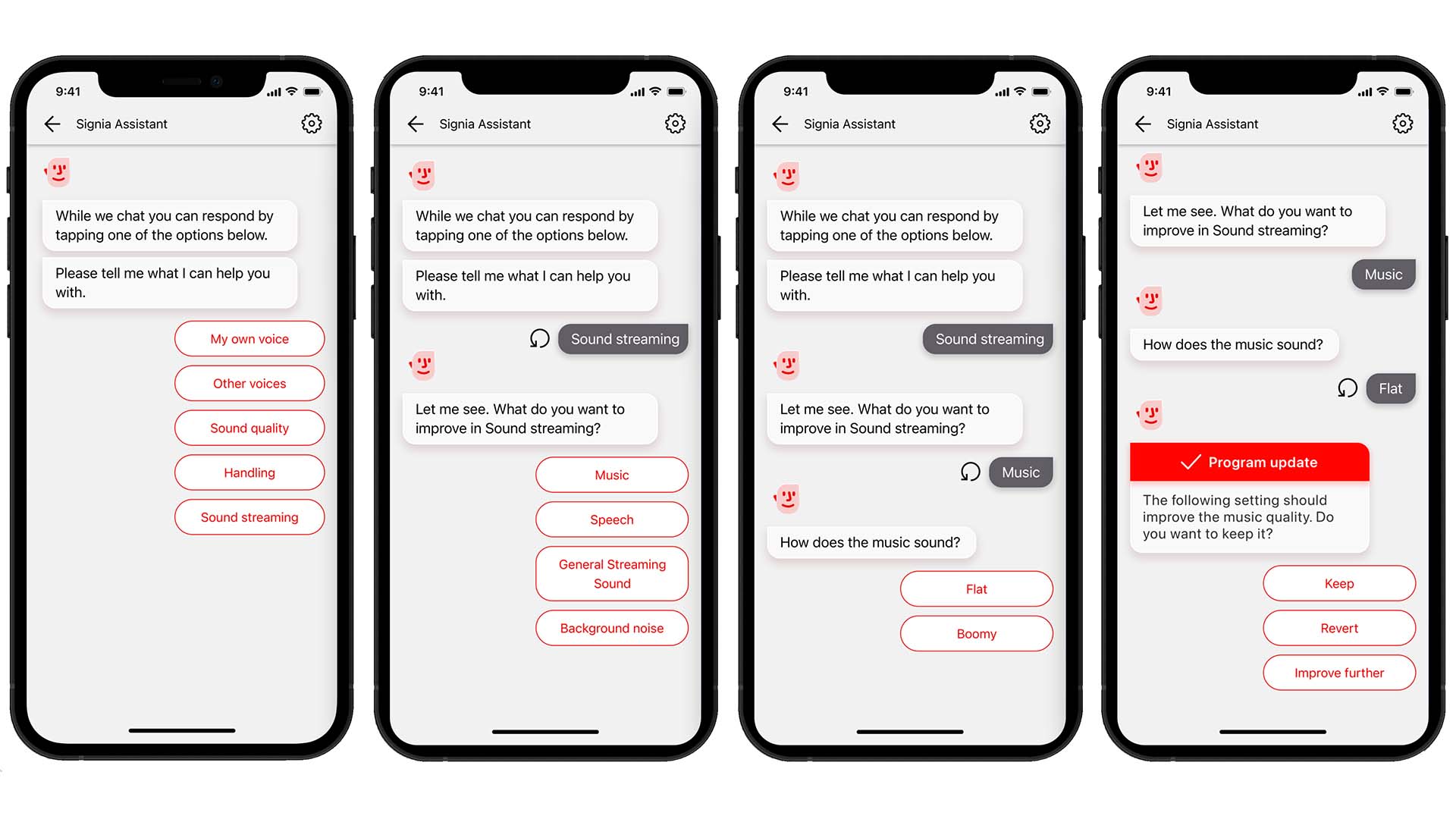
AI-based fine-tuning: How Signia Assistant improves wearer acceptance rates
Created Updated
Written by Niels Søgaard Jensen, MSc, Brian Taylor, AuD, Michael Müller, PhDDespite major advances in all steps of the hearing aid fitting process, fine-tuning to arrive at the correct settings is still, and likely will remain, a key part of the wearer’s initial experience. As hearing care professionals (HCPs) know, a one-size-fits-all approach, in which initial hearing aid settings are based solely on an audiogram and remain unchanged, is largely ineffective. Oftentimes, wearers with the same audiograms start out with similar hearing aid settings, but after several trial-and-error adjustments, end up with vastly different preferred settings. These differences in settings underscore the individualized nature of fitting hearing aids — satisfaction and acceptance are driven by the wearer’s ability to fine-tune their hearing aids, especially during initial use.
Today, when conducted by a skilled HCP, the fine-tuning process can produce remarkable results that lead to excellent wearer benefit and satisfaction. However, even the best HCP cannot always tackle some of the obvious limitations of the manual fine-tuning process. These limitations can include the need for the wearer to be present in the clinic for the fine-tuning appointment and the wearer’s ability to remember and accurately describe the problems that need to be addressed. Additionally, as demonstrated by Anderson et al. (2018), how the HCP interprets the wearer’s comments, especially when an almost infinite number of adjustments can be found in the fitting software of modern hearing aids, is a highly variable process.
In 2020, Signia introduced Signia Assistant (SA) as a new approach to fine-tuning using artificial intelligence. SA offers several new potential benefits to wearers and HCPs that address the limitations of traditional fine-tuning (Høydal & Aubreville, 2020; Taylor & Høydal, 2023). The core idea behind SA is to use a deep neural network (DNN) to suggest hearing aid adjustments while the wearer is experiencing difficulties. By using an AI-driven approach, it is possible to predict the best possible solution to a problem the wearer may experience in any situation, at any time. The prediction made by SA is based on three types of information: 1.) the wearer’s listening situations and reported problems in those listening situations, 2.) data from other anonymized fittings and the different audiological solutions that may have solved those problems, and 3.) the individual wearer’s preferences.
In previous studies, the performance and benefits of SA have been investigated by surveying hearing aid wearers and HCPs about their experiences (Høydal et al., 2020; Høydal et al., 2021). Results have been overwhelmingly positive, showing high levels of satisfaction among wearers and HCPs alike. In this article, we evaluate a large sample of the more than 150,000 Signia hearing aid wearers around the world who have used SA in their daily lives. The data clearly demonstrate SA’s ability to provide widely accepted solutions and how its machine learning system leads to improved performance over time. Before analyzing the data, we explain the functionality of SA and how AI is used to generate individualized solutions for wearers.